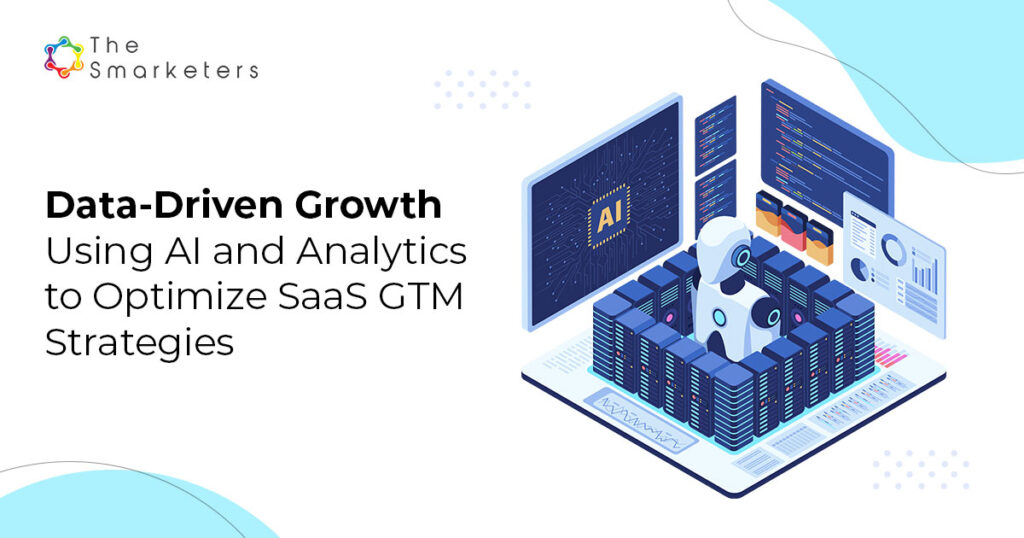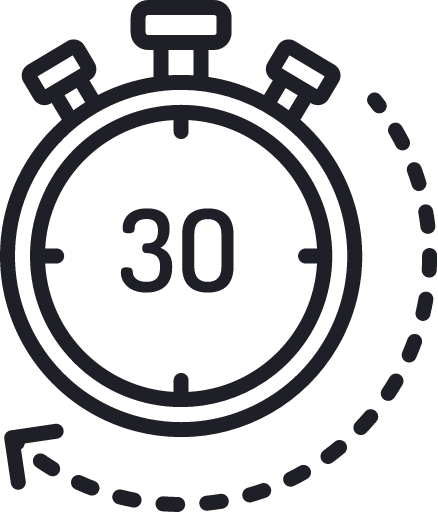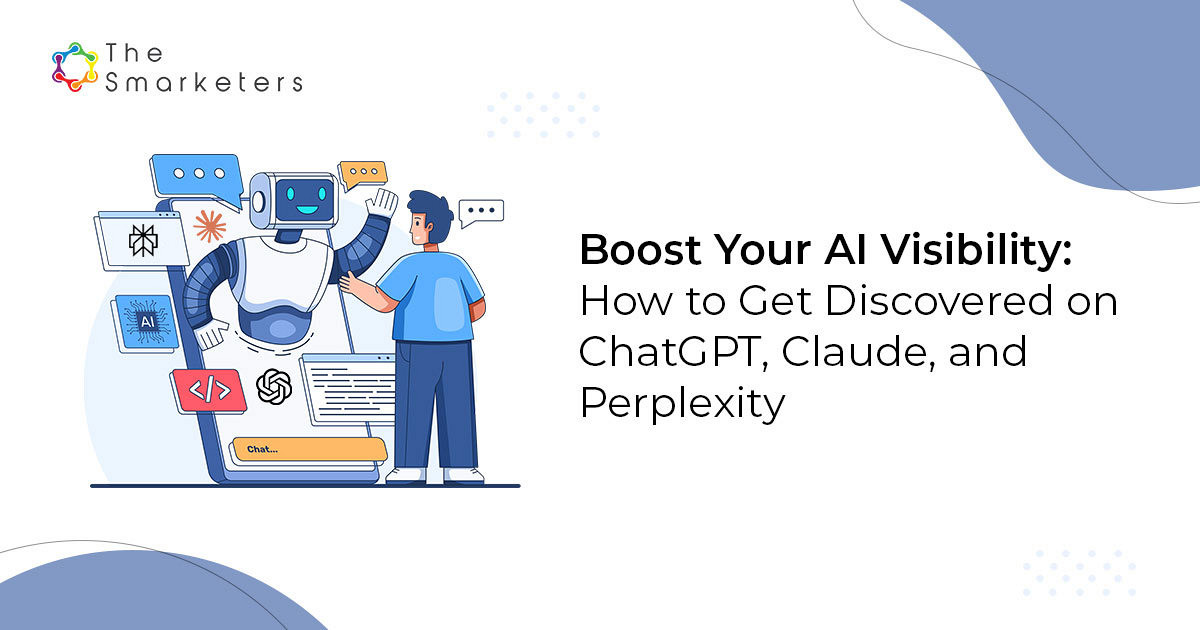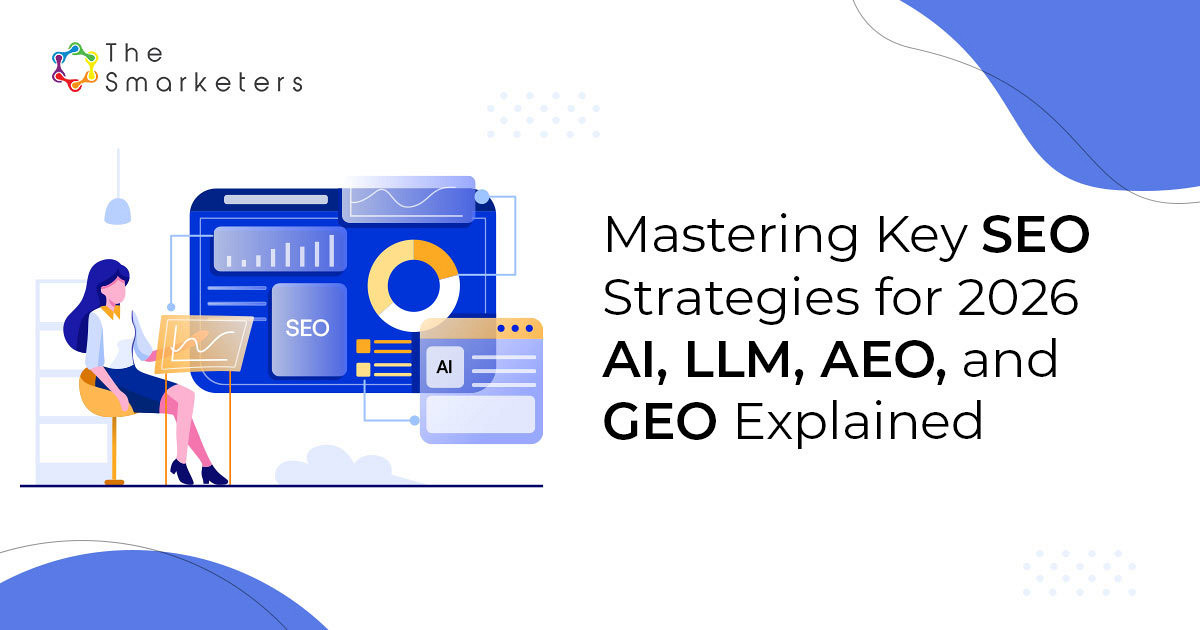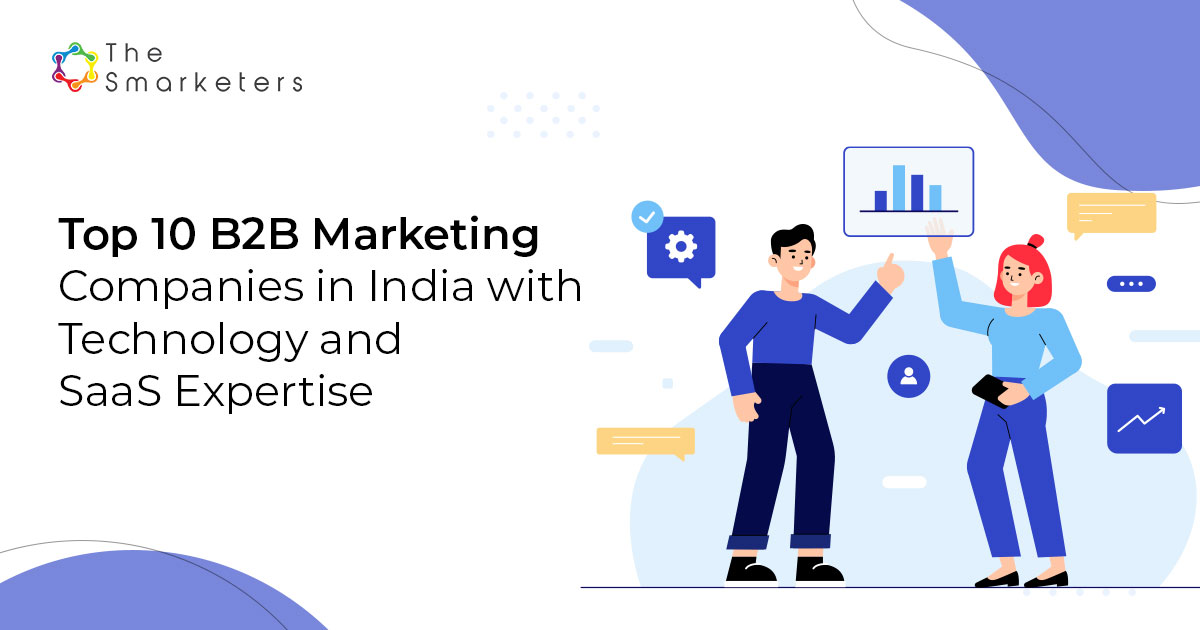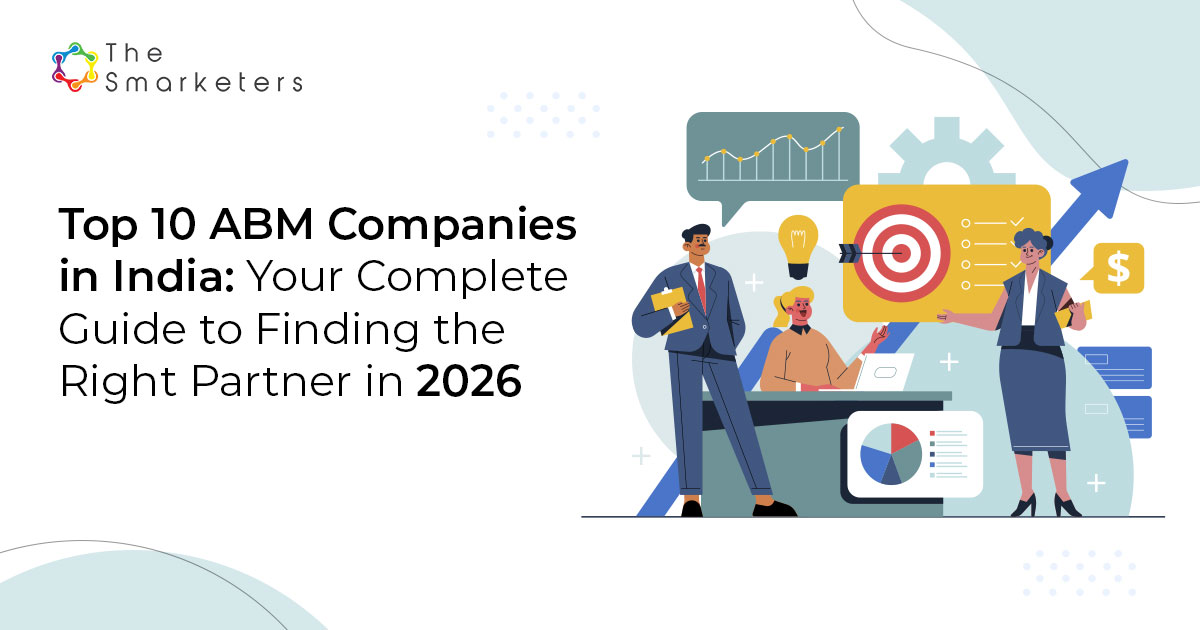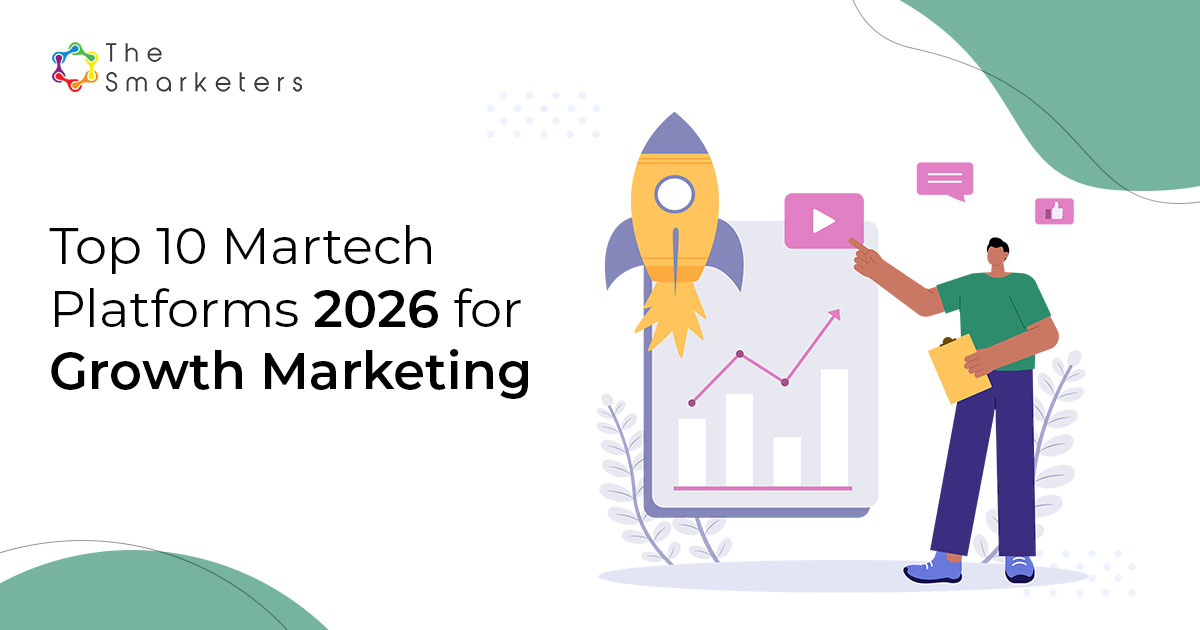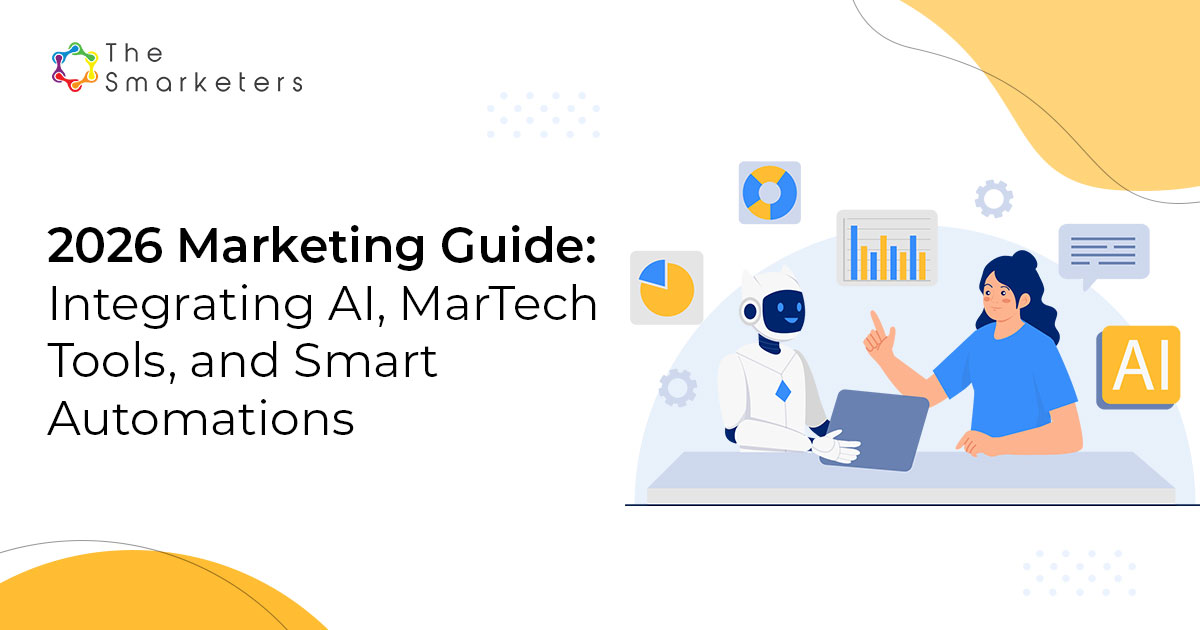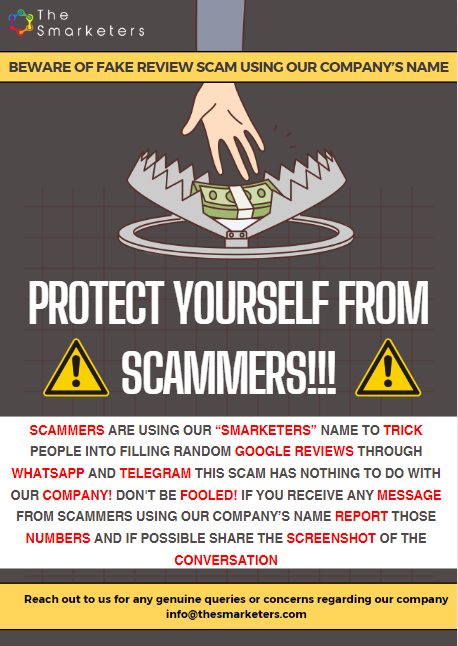Table of Contents
- Introduction: The New Era of SaaS Go-to-Market Strategy
- What Are AI-Driven SaaS GTM
- Strategies?
- Foundation First: Understanding GTM Fundamentals
- How Can AI and Analytics Improve SaaS Go-to-Market Strategies?
- What Are the Benefits of Using Data-Driven Growth in SaaS Businesses?
- How Do SaaS Companies Leverage AI for GTM Optimization?
- Essential AI Tools for SaaS GTM Strategy in 2025
- Building Your Data-Driven SaaS GTM Strategy: A Step-by-Step Framework
- SaaS GTM Strategy Examples: Companies Winning with AI and Analytics
- AI-Driven GTM Beyond SaaS: Cross-Industry Applications
- Common Challenges and How to Overcome Them
- The Future of AI in SaaS GTM: What’s Next?
- Generative AI for Personalized Content Creation:
- Get Started with Data-Driven SaaS Growth Today
- How Smarketers Can Help You Build Your Data-Driven GTM Strategy
- Why Choose Smarketers?
- Key Takeaways: Implementing Data-Driven Growth
- Frequently Asked Questions
- Additional GTM Resources from The Smarketers
- Top 10 ABM Companies in India: Your Complete Guide to Finding the Right Partner in 2026
- Top 10 Martech Platforms 2026 for Growth Marketing
- 2026 Marketing Guide: Integrating AI, MarTech Tools, and Smart Automations
- The Marketing Evolution: Loop Marketing vs Vibe Marketing vs Traditional Marketing Strategies for Maximum ROI
- Guide: How to find the right ABM agency for your organization?
Introduction: The New Era of SaaS Go-to-Market Strategy
SaaS go-to-market strategies in 2025 are fundamentally different from those of just three years ago. According to a report, 37% of venture-backed startups have reported that AI has lowered their customer acquisition costs, and 72% have indicated that AI has improved their ability to upsell and cross-sell existing customers [1]. AI and analytics have moved from experimental tools to mission-critical infrastructure, enabling companies to predict customer behavior, automate demand generation, and optimize every stage of the GTM funnel with unprecedented precision.
Traditional GTM approaches relied on intuition and lagging indicators. Today's data-driven SaaS growth model uses real-time signals, predictive analytics, and machine learning to make decisions faster and more accurately than human teams alone. This shift isn't just about efficiency—it's about survival in an increasingly competitive market where customer acquisition costs are rising and buyers expect personalized, timely engagement.
The data tells a stark story: while overall SaaS growth has stagnated for two years, AI-native companies are achieving 56% trial-to-paid conversion rates versus just 32% for traditional SaaS—a 24-percentage-point chasm that's widening fast [2]. Companies that embrace AI systematically across their GTM organizations outperform peers on virtually every metric.
Key Takeaway: Over two-thirds (69%) of startup founders now have a dedicated AI specialist or team working on their GTM strategy, with 76% of startups with dedicated AI teams seeing significant or rapid growth .
What Are AI-Driven SaaS GTM
Strategies?
AI-driven SaaS GTM strategies use artificial intelligence and advanced analytics to optimize how companies bring products to market, acquire customers, and drive revenue growth. Unlike traditional approaches that rely on historical data and manual analysis, these strategies leverage machine learning, predictive analytics, and automation to make real-time decisions across marketing, sales, and customer success
Core components include:
-
● Predictive lead scoring that identifies high-intent prospects before they engage with sales
- ● Automated customer segmentation based on behavior patterns, firmographic data, and usage signals
● Dynamic pricing optimization that adjusts based on market conditions and customer profiles
● AI-powered content personalization that delivers the right message at the right time
● Revenue forecasting models that predict pipeline health and identify gaps early
The fundamental difference is speed and scale. Where traditional GTM might take weeks to identify a trend and months to respond, AI-powered systems detect patterns in hours and execute changes in minutes.
Foundation First: Understanding GTM Fundamentals
Before diving deep into AI implementation, ensure your team understands the core principles of go-to-market excellence. AI amplifies good strategy—it doesn't fix a broken foundation. Learn the essential building blocks every GTM team needs in our comprehensive guide: Building Blocks of GTM Excellence.
How Can AI and Analytics Improve SaaS Go-to-Market Strategies?

AI and analytics enhance SaaS GTM strategies by transforming raw data into actionable insights across three key areas: customer acquisition, revenue optimization, and operational efficiency.
Smarter Customer Acquisition
Companies using AI in marketing and sales achieve 20-30% higher ROI on campaigns, with AI-driven personalization yielding 5-15% incremental revenue growth [3]. AI eliminates guesswork from targeting and messaging. Predictive analytics SaaS marketing tools analyze thousands of data points—such as website behavior, content engagement, technographic signals, and intent data—to identify prospects most likely to convert. Companies like Gong and Clari utilize AI to score leads based on conversation intelligence and buying signals, achieving lead-to-opportunity conversion rates 2- 3 times higher than industry averages
Businesses leveraging AI in customer acquisition have seen CAC reductions of up to 50%, most evident in sectors like e-commerce, fintech, and SaaS, where AI tools optimize targeting, automate segmentation, and personalize outreach .
Real-world example: When Suntec Business Parks implemented HubSpot's AI-powered marketing automation platform, they transformed their fragmented marketing efforts into a unified, data-driven system. By leveraging automated lead scoring, personalized email workflows, and integrated analytics, they gained real-time visibility into campaign performance and lead quality—enabling their team to focus on high-intent prospects and significantly improve conversion rates. See the full implementation story
Precision Revenue Forecasting
Companies with strong AI adoption across their GTM organizations achieve 61% quota attainment versus 56% for traditional companies, with shorter sales cycles (20 vs 25 weeks) and lower cost per opportunity ($8,300 vs $8,700) . AI SaaS revenue forecasting models analyze deal velocity, engagement patterns, and competitive signals to predict outcomes with 85-90% accuracy. Unlike spreadsheet-based forecasts that rely on rep intuition, these systems factor in hundreds of variables, including email response rates, meeting attendance, product usage during trials, and seasonal patterns.
Automated Personalization at Scale
AI marketing automation statistics for 2025 reveal that 92% of businesses now use AI for campaign personalization, with 74% of marketers using AI for segmentation seeing improvements in conversion rates [4]. Automation in SaaS GTM enables personalized outreach to thousands of prospects simultaneously. AI analyzes each prospect's industry, role, pain points, and digital footprint to generate tailored messaging, recommend relevant case studies, and trigger timely follow-ups—without human intervention for routine tasks
What Are the Benefits of Using Data-Driven Growth in SaaS Businesses?
Data-driven SaaS growth delivers measurable advantages across the entire customer lifecycle, from initial awareness through expansion and renewal.
Reduced Customer Acquisition Cost (CAC)
The average customer acquisition cost within the SaaS industry is $702, with costs varying significantly by sector—from $274 in eCommerce SaaS to $1,450 in Fintech [5]. By focusing resources on high-probability prospects and eliminating wasted spend on low-intent audiences, data-driven approaches typically reduce CAC by 20-35%. AI sales enablement SaaS tools ensure sales teams spend time on deals most likely to close, while marketing automation prevents budget waste on underperforming channels.
The ideal benchmark is a 3:1 ratio between Customer Lifetime Value (LTV) and CAC, ensuring you're not spending more to acquire a customer than they are worth [6].
Faster Time-to-Value
SaaS customer segmentation AI identifies which customer cohorts need which onboarding paths, support resources, and feature introductions. This tailored approach accelerates time-to-value by 40-50%, reducing early-stage churn and improving net revenue retention.
Improved Win Rates and Deal Velocity
SaaS customer segmentation AI identifies which customer cohorts need which onboarding paths, support resources, and feature introductions. This tailored approach accelerates time-to-value by 40-50%, reducing early-stage churn and improving net revenue retention.
Improved Win Rates and Deal Velocity
Companies implementing comprehensive AI automation strategies achieve 35-50% improvement in lead-to-opportunity conversion rates through better targeting and personalization, along with 20-30% reduction in sales cycle length via automated nurturing and intelligent follow-up sequences [7]. Predictive analytics identifies which deals are stalling and why, enabling sales teams to intervene with the right content or stakeholder at the right moment.
Scalable Decision-Making
Nearly every organization is on this train—95% of businesses use or plan to use AI in some capacity by 2025 [8]. Data-driven systems make consistent decisions based on patterns, not opinions. A VP of Marketing can A/B test hundreds of campaign variations simultaneously, while a CRO can identify which sales behaviors correlate with closed deals across thousands of interactions—insights impossible to glean manually
Predictive Churn Prevention
46% of surveyed SaaS companies now use churn prediction models, with advanced implementations achieving 88.6% precision in churn prediction, and companies leveraging AI for churn prevention reporting 10-15% churn reduction over 18 months [9]. Machine learning SaaS marketing models detect early warning signs of churn—declining product usage, support ticket patterns, payment delays—often 60-90 days before a customer cancels. B2B SaaS companies report an average monthly churn rate of 3.5% in 2025, making customer retention critical for growth [10].
Framework: The data-driven growth flywheel operates on three principles: collect comprehensive data across all customer touchpoints, analyze patterns to generate predictive insights, and automate action based on those insights while continuously learning from outcomes.
How Do SaaS Companies Leverage AI for GTM Optimization?
Leading SaaS companies implement AI across five key GTM functions, each with specific tools, tactics, and measurable outcomes.
1. AI-Powered Demand Generation
93% of GTM teams already use AI in some form, with 73% of GTM teams using ChatGPT and 70% of teams using AI for content and video creation [11]. AI for SaaS demand generation moves beyond basic demographics to behavioral and intent-based targeting. Systems like 6sense and Demandbase aggregate first-party data (website visits, content downloads) with third-party intent signals (job postings, technology research) to identify accounts actively evaluating solutions.
Tactical implementation: Companies create dynamic audience segments that automatically update based on engagement thresholds. When an account crosses into "high intent" territory, the system triggers coordinated plays—personalized ads, SDR outreach, executive engagement—all orchestrated without manual coordination.
2. Intelligent Lead Scoring and Routing
Companies effectively using lead scoring models see 30% higher MQL-to-SQL conversion rates than those relying solely on manual qualification, with industry averages suggesting that 10-15% of Marketing Qualified Leads should convert to Sales Qualified Leads, while top-performing organizations achieve rates of 20-25% [12]. Traditional lead scoring assigns static points for actions like email opens or whitepaper downloads. AI-powered systems consider sequence, timing, and context. A CFO downloading a pricing guide after attending a webinar scores higher than the same action in isolation.
Unlike Salesforce's rule-based scoring, modern AI models like those in HubSpot's Operations Hub or Marketo continuously learn which combinations of signals actually predict closed deals, not just engagement.
Leading companies route leads based on AI predictions about deal size, close probability, and required sales approach (PLG motion vs. enterprise sales), ensuring optimal resource allocation.
3. Sales Enablement and Conversation Intelligence
AI sales enablement SaaS platforms like Gong, Chorus, and Clari analyze thousands of sales calls to identify winning behaviors, competitive vulnerabilities, and objection-handling patterns. Sales teams receive real-time coaching during calls—prompts to mention case studies, address competitor claims, or ask discovery questions.
Companies using AI automation achieve a 40-60% increase in sales team productivity by automating routine tasks and providing actionable insights, along with 25-35% improvement in deal size through AI-powered pricing optimization .
4. Customer Segmentation and Expansion
The median net revenue retention for SaaS companies is 102%, meaning companies typically grow revenue from existing customers even after accounting for churn . SaaS customer segmentation AI identifies expansion opportunities by analyzing product usage patterns, feature adoption rates, and comparison with similar customers. Systems like Gainsight and ChurnZero predict which accounts are ready for upsell conversations and recommend specific products or features to pitch.
Segmentation goes beyond firmographics to behavioral cohorts: power users vs. casual users, feature-specific adopters, and mobile-first users. Each segment receives tailored communications, product tips, and expansion offers based on their actual usage patterns
5. Market Entry and Positioning Analytics
The average sales cycle has stretched from 84 days to 102 days in just two years, with conversion rates from lead to opportunity dropping 23% and customer acquisition costs increasing by 38% [13]. SaaS market entry analytics help companies identify which verticals, geographies, or ICPs to target next. AI models analyze win rates, deal size, sales cycle length, and NRR across different segments to recommend where to invest GTM resources.
Problem → Solution: Companies often waste 6-12 months pursuing markets with poor product-market fit. AI-driven market analysis identifies these mismatches in weeks by comparing early pipeline signals, demo conversion rates, and pilot success rates against established segments.
Essential AI Tools for SaaS GTM Strategy in 2025

The SaaS GTM technology stack has evolved rapidly. Here are the categories and leading platforms driving AI-powered growth:
Predictive Analytics and Revenue Intelligence
● Clari:Revenue Forcasting,pipe line management,and deal inspection
● 6th sense:Account based oschestration with intent Data and predictive analytics
● Gong:Conversation intelligence and revenue intelligence platform
Marketing Automation and Demand Generation
●HubSpot Operations Hub: AI-powered lead scoring, workflow automation, and attribution
●Marketo Engage: Advanced segmentation and predictive content recommendations
● Demandbase: Account-based marketing with AI-driven targeting
Customer Success and Expansion
● Gainsight: AI-powered health scoring, churn prediction, and expansion identification
● ChurnZero: Real-time customer engagement and automated playbooks
● Catalyst: Customer-led growth platform with AI recommendations
Sales Enablement
● Outreach: AI-powered sales engagement and sequencing
● Salesloft: Revenue orchestration with AI-guided selling
● Chorus.ai: Conversation analytics and coaching insights
Building Your Data-Driven SaaS GTM Strategy: A Step-by-Step Framework
Implementing AI in SaaS GTM strategies requires a structured approach. Here's how to build
your roadmap:
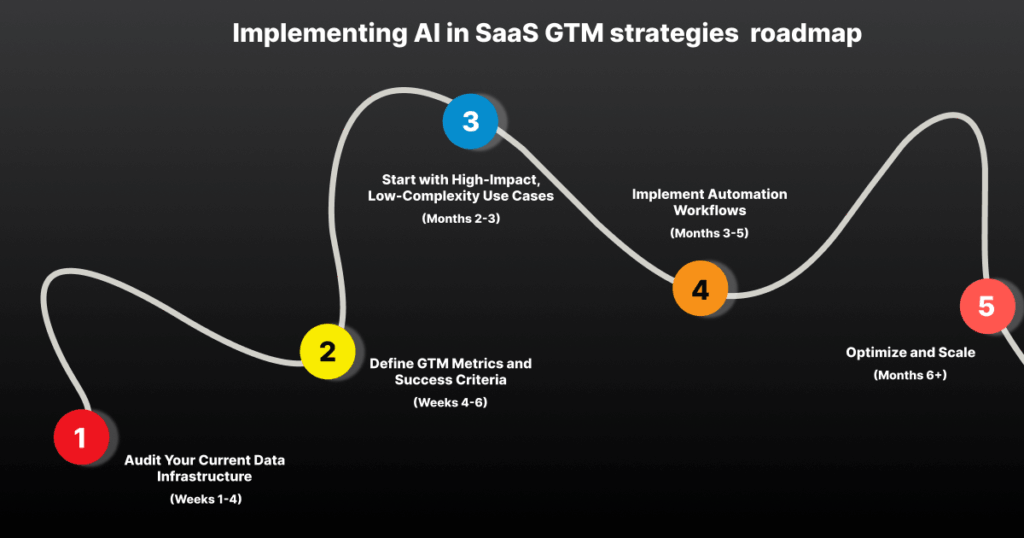
Phase 1: Audit Your Current Data Infrastructure (Weeks 1-4)
Assess what data you're collecting, where it lives, and its quality. Most SaaS companies have fragmented data across CRM, marketing automation, product analytics, support systems, and billing platforms. Identify gaps in your data collection, particularly around product usage, customer engagement, and intent signals
Critical questions: Can you connect a specific marketing touchpoint to a closed deal? Do you
know which product features correlate with expansion? Can you identify accounts showing early churn signals?
Phase 2: Define GTM Metrics and Success Criteria (Weeks 4-6)
The median CAC Payback Period should be around 12 months, with top performers achieving payback in under 12 months, and the optimal LTV: CAC ratio is 3:1 . Establish baseline metrics across the funnel: MQL-to-SQL conversion, sales cycle length, win rates by segment,
CAC by channel, time-to-value, and net revenue retention. Set specific improvement targets—most companies see 15-30% improvements within 6 months of implementing AI-driven strategies.
Phase 3: Start with High-Impact, Low-Complexity Use Cases (Months 2-3)
Startups report that AI has driven the most improvement in GTM in customer service (30%), followed by sales (25%), and marketing (21%) . Begin with areas where AI delivers immediate value with minimal complexity:
● Predictive lead scoring to improve MQL quality.
● Automated customer segmentation for personalized email campaigns.
● Churn risk scoring to prioritize CSM outreach.
● Content recommendations based on visitor behavior
Avoid complex implementations like custom machine learning models initially. Use existing platform AI features first.
Ready to Build Your Complete GTM Plan?
This framework provides the AI and analytics layer, but a comprehensive go to-market strategy requires additional foundational elements. Whether you're launching a new SaaS product or optimizing an existing one, our step-by-step guide covers everything from market research to pricing strategy: Complete Go-to-Market Plan for SaaS Marketing
Phase 4: Implement Automation Workflows (Months 3-5)
Connect AI insights to automated actions. When a lead reaches a high intent score, automatically create a sales task, send a personalized email sequence, and adjust ad targeting.
When product usage drops below the threshold, trigger the CSM alert and a customer engagement campaign.
The goal is to remove manual steps between insight and action. Every AI prediction should trigger a workflow.
Phase 5: Optimize and Scale (Months 6+)
Companies using predictive analytics for marketing decisions see up to 25% improvement in ROI compared to those relying on traditional forecasting methods .Analyze what's working and double down. Review which AI predictions are most accurate, which automated workflows drive the best outcomes, and where human judgment still outperforms algorithms. Expand successful use cases to other segments, regions, or product lines.
Framework: The 70-20-10 rule for AI GTM investment: Allocate 70% of effort to proven, high-ROI use cases (lead scoring, churn prediction), 20% to promising experiments (conversation intelligence, dynamic pricing), and 10% to emerging capabilities (generative AI for content, advanced attribution modeling).
SaaS GTM Strategy Examples: Companies Winning with AI and Analytics
Example 1: Atlassian's Product-Led Growth with AI Optimization
Atlassian uses machine learning to identify which free users are most likely to convert to paid plans. Their AI analyzes usage patterns, collaboration behaviors, and feature adoption to automatically trigger personalized upgrade prompts, in-app messaging, and email sequences.
This approach contributed to their achieving 95%+ of revenue through self-service channels.
Key tactic: They created behavioral cohorts based on "aha moments"—specific actions that correlate with long-term retention. Users who complete these actions receive different onboarding paths than those who don't, accelerating time-to-value and improving conversion rates.
Example 2: Gainsight's AI-Driven Customer Success Model
Gainsight uses its own platform to predict customer health scores 90 days in advance. By analyzing product usage, support interactions, NPS responses, and engagement with CSMs, they identify at-risk accounts before traditional indicators appear. This early warning system enables proactive intervention, contributing to their 95%+ gross retention rate.
Key tactic: They built automated playbooks that trigger based on health score changes. When an account's score drops, the system automatically suggests specific actions—product training, executive business reviews, or feature adoption campaigns—based on what worked for similar customers.
Example 3: Snowflake's Account-Based Intelligence
Snowflake combines first-party product usage data with third-party intent signals to orchestrate enterprise ABM campaigns. Their AI identifies when target accounts are researching data warehousing solutions, automatically coordinating marketing touches, SDR outreach, and sales engagement without manual handoffs.
Key tactic: They use consumption analytics to identify expansion opportunities. When customers approach capacity limits or adopt specific features, automated workflows alert account teams and surface relevant use cases from similar customers, driving a land-and-expand motion that averages 178% net revenue retention.
Example 4: Suntec's Marketing Transformation with HubSpot
Suntec Business Parks faced challenges with fragmented marketing tools, manual lead tracking, and limited campaign visibility. By implementing HubSpot's AI-powered marketing automation platform, they unified their marketing operations and gained data-driven insights into lead behavior and campaign performance. The integrated platform enabled automated lead nurturing, intelligent segmentation, and real-time analytics—transforming their marketing from reactive to predictive. Read the complete case study.
AI-Driven GTM Beyond SaaS: Cross-Industry Applications
While this guide focuses on SaaS applications, AI-powered GTM strategies are transforming traditional industries as well. Manufacturing companies are leveraging similar predictive analytics, automated segmentation, and data-driven decision-making to optimize their market entry strategies.
The principles of AI in GTM—predictive lead scoring, automated nurturing, customer segmentation, and real-time analytics—apply across B2B sectors. Manufacturing organizations face unique challenges, including longer sales cycles, complex stakeholder ecosystems, and technical product specifications, but AI helps address these through enhanced targeting precision and personalized content delivery at scale.
GTM Strategies Beyond Software
Wondering how AI and data-driven approaches translate to traditional industries?
Manufacturing companies are successfully adapting these GTM principles to their unique market dynamics, sales cycles, and customer needs. Discover how: GTM Strategy in Manufacturing: A Complete Guide
Common Challenges and How to Overcome Them
Data Quality and Integration Issues
Problem: Most SaaS companies struggle with inconsistent data across systems. CRM records don't match marketing automation profiles; product analytics data isn't connected to customer success platforms.
Solution: Start with a single source of truth—typically your CRM—and build integrations systematically. Use tools like Segment, Census, or Hightouch to create a customer data platform (CDP) that syncs data bidirectionally. Implement data governance policies with clear ownership and quality metrics
AI Model Accuracy and Trust
Problem: While the proportion of startups facing integration issues between AI and existing systems dropped over 80%, and 62% fewer startups lack employees with AI expertise, challenges still persist . Sales teams distrust AI predictions when they can't understand the logic.
Solution: Choose platforms with explainable AI that show which factors influenced predictions. Train teams on how models work and involve them in refining criteria. Start with AI-assisted decisions (humans make the final call) before moving to fully automated actions.
Balancing Automation with Personalization
Problem: Over-automation creates generic, robotic experiences that harm conversion and retention.
Solution: Use AI to enable personalization at scale, not replace it. Automate research, data analysis, and routine follow-ups, but preserve human touchpoints for high-stakes interactions.
For example, automate initial outreach but have sales reps personally handle discovery calls informed by AI insights.
Resource Constraints and Tool Sprawl
Problem: Seed-stage startups' biggest challenge is choosing best-fit AI tools (23%), while Series A through D companies report that cost is their biggest concern (25%).
Solution: Consolidate where possible. Choose platforms with multiple AI capabilities (HubSpot, Salesforce) rather than point solutions for each use case. Start with your existing tech stack's AI features before adding new tools. 75% of teams spend 10% or less of their budget on AI, but this percentage is expected to increase over time .
The Future of AI in SaaS GTM: What's Next?

Generative AI for Personalized Content Creation:
Beyond ChatGPT for drafting emails, the next wave involves AI creating custom case studies, ROI calculators, and demo environments tailored to each prospect's specific use case.
Companies will dynamically generate sales collateral that references the prospect's industry, competitors, and stated challenges.
Real-Time Competitive Intelligence
Companies using automated competitive intelligence report 20-30% improvement in competitive win rates and 15-25% reduction in deal cycles when competing against known alternatives .
AI systems will monitor competitor moves—pricing changes, feature releases, executive hires—and automatically adjust GTM tactics. When a competitor announces a new capability, your marketing team receives alerts with suggested counter-messaging and sales receives objection-handling scripts.
Predictive Market Timing
By 2025, 75% of top-performing marketing teams will use predictive analytics . Advanced models will predict optimal timing for launches, campaigns, and outreach by analyzing market conditions, competitor activity, seasonal patterns, and micro-economic indicators. This moves beyond "send emails on Tuesday mornings" to "launch this campaign on October 15th when your target accounts are most receptive."
AI-Powered Pricing Optimization
B2B SaaS companies using AI-powered pricing optimization report 15-25% improvement in average deal size and 20-30% reduction in pricing negotiation cycles . Dynamic pricing models will adjust in real-time based on customer willingness to pay, competitive positioning, and revenue goals. Like airline pricing but transparent—different customers see different prices based on their needs, budget, and strategic value.
Get Started with Data-Driven SaaS Growth Today
With 95% of businesses using or planning to adopt AI by 2025, companies that don't leverage AI and automation are giving competitors a potential advantage in reaching prospects faster, responding quicker, personalizing better, and making data-driven pivots . The competitive advantage from AI in SaaS GTM strategies compounds over time. Companies that start today will have 12-18 months of learning, optimization, and data collection that competitors can't replicate overnight.
Begin with your biggest pain point: Are you wasting budget on low-quality leads? Implement predictive lead scoring. Losing deals to competitors? Add conversation intelligence. Experiencing unexpected churn? Deploy AI-powered health scoring.
The tools exist, the frameworks are proven, and the ROI is measurable. The only question is whether you'll lead the shift to data-driven growth or scramble to catch up in 2026.
How Smarketers Can Help You Build Your Data-Driven GTM Strategy
Implementing AI and analytics in your GTM strategy isn't just about adopting new tools—it requires strategic thinking, technical expertise, and ongoing optimization. At Smarketers, we partner with SaaS companies to transform their go-to-market approach from reactive to predictive, from manual to automated, and from intuition-based to data-driven.
Our AI-Powered GTM Services
GTM Strategy & Planning: We begin with a comprehensive audit of your current GTM infrastructure, data quality, and technology stack. Our team identifies gaps in your data collection, analyzes your conversion funnel, and develops a customized roadmap for AI implementation that aligns with your business goals and budget. We help you prioritize high-impact use cases and define clear success metrics.
Marketing Automation Implementation: Whether you're implementing HubSpot, Marketo, Salesforce, or other marketing automation platforms, we handle the entire setup—from technical configuration to workflow design. We create intelligent segmentation models, build automated nurturing sequences, and establish predictive lead scoring systems that identify your
highest-value prospects. Our implementations are designed for scalability, ensuring your automation grows with your business.
Data Integration & Analytics Setup: We consolidate fragmented data across your CRM, marketing automation, product analytics, and customer success platforms into a single source of truth. Our team implements customer data platforms (CDPs), establishes data governance policies, and creates custom dashboards that provide real-time visibility into your GTM performance. You'll finally be able to track a prospect's journey from first touch to closed deal—and beyond.
AI Tool Selection & Optimization: With hundreds of AI-powered GTM tools in the market, choosing the right stack is overwhelming. We evaluate your specific needs, assess integration requirements, and recommend platforms that deliver maximum ROI for your use case. Whether you need conversation intelligence, predictive analytics, or customer success automation, we help you build a lean, effective tech stack.
Ongoing Optimization & Training: AI models improve with data and refinement. We don't just implement and disappear—we provide ongoing optimization, analyzing what's working, adjusting workflows, and training your team to leverage AI tools effectively. Our quarterly business reviews keep your strategy aligned with evolving market conditions and ensure you're
continuously improving conversion rates, reducing CAC, and increasing customer lifetime value.
Why Choose Smarketers?
● Proven Track Record: We've helped companies like Suntec Business Parks transform their marketing operations through strategic HubSpot implementations, delivering measurable improvements in lead quality, conversion rates, and campaign ROI. See our success stories.
● Full-Stack GTM Expertise: Our team combines strategic marketing knowledge with technical implementation skills. We understand both the business outcomes you need and the technical requirements to achieve them.
● Platform-Agnostic Approach: We're not tied to any single vendor. Our
recommendations are based on what's best for your business, not commission structures or partnerships.
● Focus on Measurable Results: Every implementation includes clear KPIs, baseline metrics, and ongoing reporting. You'll know exactly how AI and automation are impacting your pipeline, conversion rates, and revenue.
● Scalable Solutions: Whether you're a seed-stage startup or a growth-stage company with $50M+ ARR, we design solutions that scale with your business. Start with foundational automation and expand into advanced AI capabilities as you grow.
Ready to Transform Your GTM Strategy?
The competitive advantage from AI in SaaS GTM compounds over time. Companies that start today will have 12-18 months of learning and optimization that competitors can't replicate overnight
Schedule a free GTM audit to discover:
● Where you're losing leads in your current funnel
● Which manual processes could be automated for immediate ROI
● How AI could reduce your customer acquisition costs
● What your competitors are doing with AI that you're not
Contact Smarketers today to begin your journey toward data-driven growth.
Key Takeaways: Implementing Data-Driven Growth
● The competitive advantage is undeniable: AI-native companies are achieving 56% trial-to-paid conversion rates versus just 32% for traditional SaaS companies, with companies demonstrating strong AI adoption outperforming peers with higher quota attainment (61% vs 56%), shorter sales cycles (20 vs 25 weeks), and lower cost per opportunity.
● Start with foundations: Clean data and clear metrics matter more than sophisticated AI. Master basic analytics before deploying advanced machine learning.
● Focus on business outcomes not technology: Choose AI tools that solve specific GTM problems (too many unqualified leads, low win rates, high churn) rather than implementing AI for its own sake.
● Balance automation with human judgment: Startups report AI driving
improvement across customer service (30%), sales (25%), and marketing (21%).should augment your team's capabilities, not replace strategic thinking. Use automation for scale and consistency; preserve human insight for complex decisions.
● Iterate and learn continuously: AI models improve with more data and feedback. Treat your initial implementation as a starting point, not an end state. Review performance monthly and refine accordingly.
● Measure ROI rigorously: McKinsey's research shows that companies using AI in marketing achieve 20-30% higher ROI on campaigns, with predictive AI marketing initiatives leading to results like an 85% increase in click-through rates . Track specific metrics before and after implementation—CAC, win rates, sales cycle length, NRR.
Data-driven growth should deliver measurable improvements within 3-6 months.
Frequently Asked Questions
What is the difference between traditional SaaS GTM and AI-driven approaches?
Traditional SaaS GTM strategies rely on historical data, manual analysis, and broad segmentation (by industry or company size). AI-driven approaches use real-time behavioral data, predictive modeling, and micro-segmentation based on dozens of variables, including intent signals, product usage patterns, and engagement history. The result is faster, more accurate decisions with personalized execution at scale.
Which metrics should I track to measure AI GTM success?
Focus on conversion metrics at each funnel stage: MQL-to-SQL conversion rate, sales cycle length, win rate, average deal size, customer acquisition cost (CAC), customer lifetime value (LTV), net revenue retention (NRR), and churn rate. Key benchmarks include CAC Payback Period (median 12 months for healthy companies), LTV: CAC ratio (aim for 3:1), and Net Revenue Retention (median 102% for SaaS companies) . Compare these metrics before and after implementing AI tools, typically reviewing monthly for the first 6 months.
Can small SaaS companies benefit from AI-driven GTM strategies?
Absolutely. Small SaaS companies under $3M ARR show a "barbell" effect—they're far more likely than bigger ones to either disclaim using any AI (32% vs. 12%) or be "AI-only" or "AI-first" (26% vs. 18%) . Early-stage companies actually benefit more because they establish data-driven processes from the start rather than retrofitting them later. Many affordable tools offer AI capabilities: HubSpot's free CRM includes basic lead scoring, Intercom provides AI-powered customer engagement, and Google Analytics 4 offers predictive metrics.
How long does it take to see results from AI-powered SaaS GTM?
Most companies see initial improvements within 30-60 days for tactical implementations like automated lead scoring or email personalization. Strategic initiatives like predictive pipeline management or customer segmentation typically deliver measurable results within 90-120 days.
Full ROI—demonstrably lower CAC, higher win rates, improved retention—usually materializes within 6-9 months as AI models learn from more data.
What skills do GTM teams need to leverage AI effectively?
77% of companies task marketing teams with implementing AI tools, highlighting the importance of marketing teams being well-versed in AI applications . Teams need data literacy (understanding metrics, interpreting dashboards, identifying patterns), basic technical fluency (setting up integrations, configuring automation workflows), and analytical thinking (hypothesizing what drives outcomes, designing experiments). You don't need data scientists or ML engineers for most use cases—marketing ops, sales ops, and rev ops professionals can implement and manage AI tools with vendor support and training.
How do I choose between different AI GTM platforms?
Start by identifying your biggest GTM challenge: Is it generating enough pipeline? (focus on demand generation AI), Converting opportunities? (sales enablement AI), Or retaining customers? (customer success AI). Evaluate platforms based on integration with your existing stack, ease of use, quality of AI predictions (ask for case studies with metrics), and vendor support. Most platforms offer proof-of-concept periods—test with a small segment before
company-wide rollout.
Additional GTM Resources from The Smarketers
Building a comprehensive, data-driven GTM strategy requires both technical implementation and a strategic foundation. Explore these resources to deepen your understanding:
● Building Blocks of GTM Excellence - Master the fundamental principles that make AI implementations successful
● Complete Go-to-Market Plan for SaaS Marketing - Step-by-step guide to creating your entire GTM strategy from market research to execution.
● GTM Strategy in Manufacturing - See how data-driven GTM principles apply across industries
● Suntec HubSpot Implementation Success Story - Real-world example of marketing automation transformation
Clari: Revenue forecasting, pipeline management, and deal inspection

